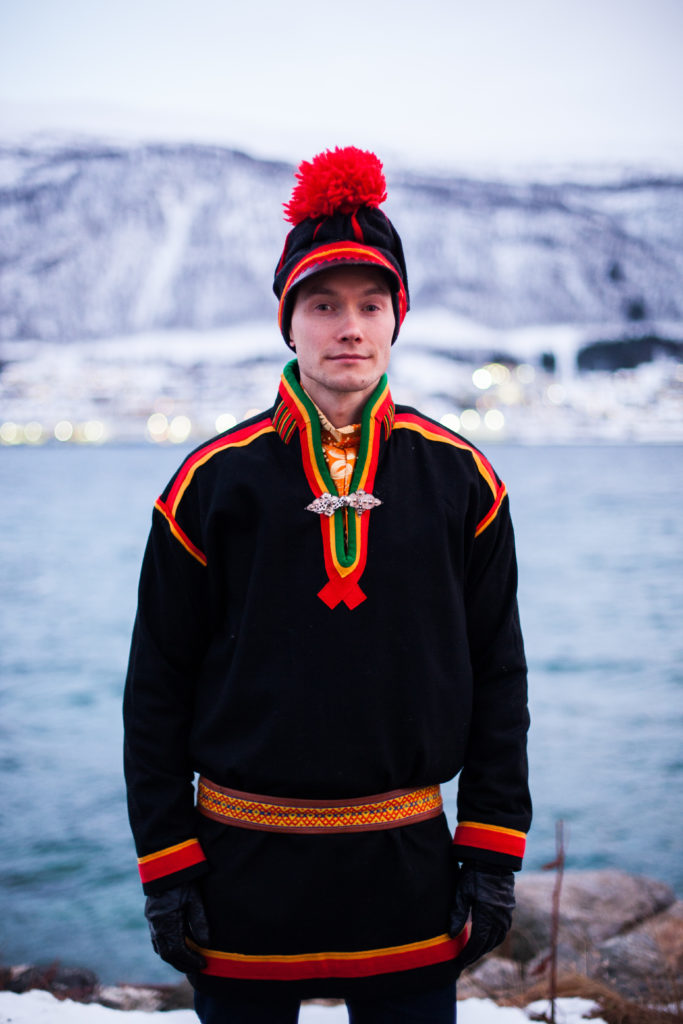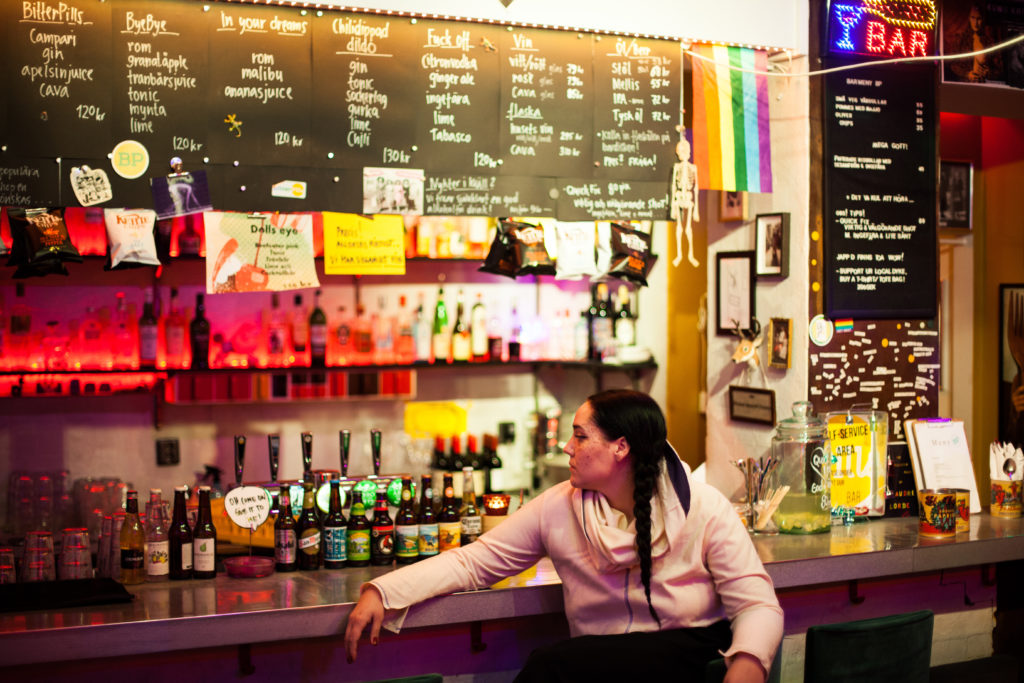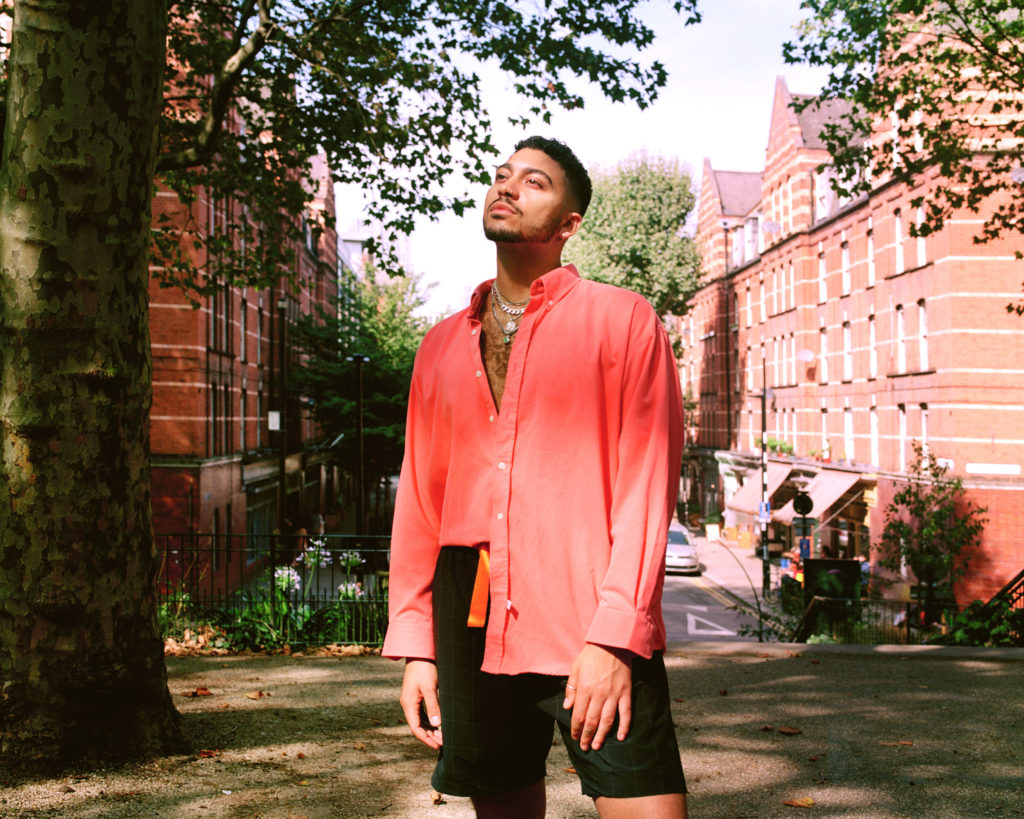Queering Spaces - In conversation with Tim Boddy
This article contains image descriptions in the captions to help those with visual impairments.

In conversation with Tim Boddy, we discuss queer history, culture and community through the experiences Boddy had whilst making Queering Sami and The Fabulous Ones.
Hey Tim, thanks for taking time to talk. Just to kick things off, how did you come to taking pictures and photography being a route for you?
Hey, interesting questions. I know some people will have a snappy answer as to how they got into photography but I always struggle, as I feel like it's been a slow burner relationship. It’s not like from when I was 8 I was handed a camera and it took off from there. In my early 20’s I got a camera, I was a little lost and didn’t have something that brought me joy, I kinda had a rough time in my 20s with mental health, and this was when society wasn’t in an open place as we are now. I started taking photos which caught my attention in my local town, and I remember it giving me a sense of joy. I went to study photography on a whim, and it helped to solidify my connection with photography. I started my masters in 2018 and in the year leading up I got more into finding my identity as a photographer and I guess as a queer person in general where those things have linked in.

Did you find yourself the more you experimented with photography and exploring your own identity, was photography something which allowed you to explore the narratives on what you wanted to tell?
I’ve had my own unique experience of coming out and I guess everyone has. I was a little bit slow in that journey. It was only in my late 20’s where I was an openly gay man which I feel was reflected in my work. If I look back at photos I took in my mid 20s, I find that it didn’t have that much of an identity. Partly because I didn’t know myself very well and what it was that connected me to the world. There were some projects I did that I think have some merit but there was a level of objectiveness and emotional distance. However now I’ve taken a 180 my approach.
Your work on Queering Sami really csaught my attention, when I think of Scandnvian countries I don’t think of the stories you’ve told on discrimination. How did you discover these stories and the culture and history of Sami and queer lives?
I’ve had an interest in scandanvian culture for some time. Partly because of how people put it up a liberal utopia to an extent and is recognised of how progressive it is. And it is in many ways. I just happened to see a story three or four years ago, it was about one of the people involved in my project Runar Myrnes Balto. Balto has been President of the Norwegian Sámi Association since 2018. He's also a Sámi member of Parliament, elected in 2017, and the first openly gay member of Parliament. It was this queer story that was a perfect expression of the kind of stories that I am interest in. I did so much research for about 4 months to find out who these queer members of the Sami community were. The more I kept delving into the subject matter and stripping the layers away and increasing my understanding of the issues involved, not only as a queer person but of Sami history and identity in Northern Scandinavia, the more interested I became. There's this idea of double violence present; not only of oppression from the government and individual Scandinavian states, but also oppression of being a queer person in a heteronormative society. I feel that a lot of marginalised people, wherever they are based, can relate to the stories

The story is very reflective of how many other news stories and examples of queer oppression and almost acts as a pocket example of it. When did you got to Sami, how did your months of research meet with your first impressions?
I guess my expectations were met by my lived experiences of what its like meeting members of the queer community in general, who can often be more open and accepting. I had open and in depth conversations with everyone I photographed and even though I wasn’t part of the Sam Community. I felt welcomed as part of the community. There was a catharsis to the entire experience, I look back on it as great fondness.
I spent hours chatting to the participants prior to taking photographs of them, and had really stimulating discussions on all matter of queer issues; be it Sami-related, family, other general queer topics or how things are in the UK with LGBTQ+ rights

I think your experience often comes down to the more you hear and know about queer experiences from people in the community, theres a level of a shared understanding between everyone on what its like living and being gay in society. Do you think by sharing your stories helped with making the work?
I think it there's a level of empathy and understanding queer people can easily share with one another. We all have our history and trauma growing up queer in a straight society. I think the openness and warmth I felt would have been the same if I was straight but we were able to connect on a different level.
I think what stood our for me was seeing the people you met in Sami traditional clothing whilst being openly queer. I found those images to be really powerful as it's a prgressive connection between culture and their authentic selves. How did that approach of photographing them come along?
I didn’t ask anyone to dress up in traditional clothes, called Gakti. In these warm and in-depth conversation the subjects came forward wanting to wear these outfits. It's almost a uniform as different outfits have colours and they all have different meanings. I feel it gives the image a direct look at the project being about Sami culture.

One of the photographs is of Timimie Marak (they / them), an activist in Sami, tell me more about them…
They are a tour de force, they walked me around Stockholm and their home. They’ve been at the forefront of activism and really take no prisoners. They (Timimie) use art and lectures to highlight how the normative power silences and stupefies, and Timimie possesses a strong understanding of how environmental concerns are vital to the indigenous community. They are involved with the organising of Sápmi Pride amongst other things (fun fact: the first Sápmi Pride was held in the northern Swedish town of Kiruna in 2014).
When you made the work what was the level of discrimination and violence was happening?
I was there in 2019 and it would have been impossible to make this body of work 5 years before that.. Its nothing short of remarkable how far its come; from a lot of shame within the queer Sami community, to people writing books about queer Sami people, and society hearing about their experiences and openly discussing all these issues. The difference between 2010 to 2020, where you now have people in higher levels of Sami politics who are openly gay people is incredible. This is a good news story and this idea is something I’m drawn towards, work that shows queer activism, postivity, well-being and mental health, and this work encompases those things.
That's not to say that everything is magically fixed, and every queer Sami person is able to live a life without prejudice - there's still work to be done. But the progress is heart-warming.

Queer Bruk - A space to celebrate dancehall and afrobeats for queer people of colour - Tim Boddy ID: A young man stands in a park with red bricked terrace buildings behind them. The colour of their shirt matches the red bricks.
It's really refreshing to see a project about people claiming their rights in society. It's done really subtly. After making Queering Sami you moved on to make Fabulous Ones. How did you come to making a project about reclaiming queer spaces?
I live in a world where queer spaces are a part of my life. Prior to lockdown 1 I was going to events, nights - but not just to these more established ‘bricks and mortar’ spaces, these iconic gay places. I do recognise however that going to these iconic places can be an important way of shaping your experience coming out for some people.
58% of queer spaces disappearing between 2006 and 2016 is really culturally important but also not totally the lived experience I have had. They are an important part to some people when coming out and dipping your toes into lgbt community. However, there are more queer collectives and nights and events that are now taking a different approach. The way I experience gay life in London is moving away from the idea of a fixed place, be it a poetry night in a pub, or music, clubs, acting, drag, performance. They are perhaps operating more of a DIY night out, but I want to refrain from saying DIY as a lot of these people are at the top of their game. A lot of people are doing really creative, exciting, and most importantly inclusive things. This is a world I exist in and inhabit. I simply enjoy going to queer events and queer nights and feel part of the community.

The Bitten Peach - a Pan-Asian performance collective - Tim Boddy ID: Person standing in a green cape amongst ferns. They are wearing make up and a large silver necklace upon a ruffed shirt.

A mental health collective and sober club night centering healing and joy for queer, transgender, non-binary & intersex black people and people of colour - Tim Boddy ID: A group of individuals posting in a car park.
Why do you think Queer spaces are disappearing?
I think it's multi-faceted. London is a hard place to live, lots of gentrification. A lot fo queer spaces are independently run so they are not like All Bar One, Wetherspoons. Rent is extortionate with capitalism eating itself basically.
There's also points to be raised which I’ve had conversations with people in this project about who these spaces were for. A lot of them were and are important but catered more to a cis white crowd. It's a bit unfair to purely blame them for their own downfall, but that is an element of it, when you can't move with the times. For some places there was a lack of diversity, I'm thinking in terms of people being freely able to express their gender, and spaces truly accepting of people of colour and trans people. Some didn't evolve as the LGBTQ+ community evolved.

An alcohol-free LGBTQI+ monthly social - Tim Boddy ID: Three men side on a sofa. We see the back of the sofa with them men turned around. We can only see their top halves. The sofa is red and the background walls are green.
What tactics are being used to keep queer spaces going?
Getting away from a bricks and mortar type of space. Making more queering of regular spaces. One thing which comes to mind is an event called Knickerbocker which is a queer club night run by two white cis males, but how they approach the night is very inclusive and progressive. They launched their event at a place called the Yard theatre which is a general non-LGBTQ+ cultural space that hosts various shows and events. For example, when Aaron and Alex started Knickerbocker they made sure all toilets were gender neutral, which was not The Yard Theatre's policy until then. However once Knickerbocker implemented this for their (originally one-off) night, The Yard Theatre now have all their toilets gender neutral by default for every event that they host. In affect, Knickerbocker successfully queered that space.l. They make an effort for their event to be inclusive of trans and gender fluid people. Door staff are trained in a certain way and they know how to make the space a welcoming one when you arrive. As you know the world gives you enough shit being different, so a welcoming and safe place is needed.

The Cocoa Butter Club - Showcasing and celebrating Performers of Colour within cabaret - Tim Boddy ID: A woman is standing on the steps that lead to a flat, the door is red and open. Plants climb up the metal hand railings. They have blue braided hair with multiple piercings.
I think it's really important you’re telling these stories now, especially in a time where homophobia and hate crime is on the rise and has been growing staggeringly since 2016. Queer stories and visibility need to be seen more than ever. With the world the way it is at the moment, is there a roadmap on the next set of stories you want to tell?
Since graduating and being in the Pandemic it hasn't been easy working on this but my intention to come back to the Fabulous Ones project. With LGBTQIA+ rights changing all the time all over the world, I want to tell stories despite it being so difficult to do so in a pandemic. When things open up I want to explore how new voices and talent shape queer culture in London as well as larger issues we face as a community.
The queer community has always possessed a resilience in terms of how spaces are used and enjoyed, history has taught us this; and while there are enormous challenges ahead, I don't doubt that the community will continue to find ways to adapt and entertain us all.
You can find more of Tim's work here.